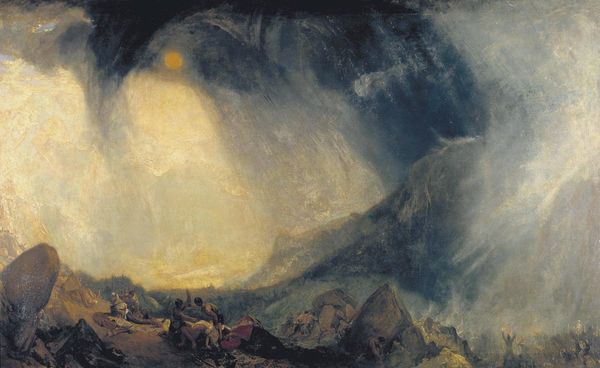Zao Wou-Ki 04.01.79, 1979, as seen on view in Taipei
Executed in 1979, 04.01.79 from our Hong Kong Evening Sale of 20th Century & Contemporary Art & Design embodies the pivotal stylistic transition from the artist's middle-to-late period of abstract paintings. The largest painting from the 1970s by the artist to ever come to auction, as well as one of his ten largest works on the market, 04.01.79 is presented to the public for the first time. In this video with Jonathan Crockett, Deputy Chairman of Asia, discover the painting's intersection of traditional Chinese ink painting and European abstraction.
Around that time 04.01.79 was created, Zao Wou-Ki had gained full control of a new stylistic endeavor in conveying a heightened sense of spontaneity and calm in his paintings. As exemplified in this masterwork, Zao's portrayal of tranquillity and elegance in nature is unrivaled. This new stylistic phase is highly connected to events that had occurred during that period of his life. The illness and eventual passing of Zao's second wife in 1972 had left Zao in mourning. Following a period of personal loss and turmoil, it was through this ordeal that the artist started to reconnect with the study of ink wash painting. He resumed painting again in 1973 and began working on large format paintings circa 1977.
Artist in his studio, 1982 © Martin Franck/Magnum Photos
Large zones of dark wash call to Zao's exploration of the ink medium, at the same time pinpointing the painting to this specific phase in the artist's life from 1973 to 1980. Zao himself had said that his style underwent a new transformation from 1973 onwards—he regained peace in his works as compared to the deliberate control depicted in earlier abstract works; he had achieved a state of spontaneity and calm. The year that 04.01.79 was executed can hence be seen as a period of triumph in reaching a new climax in his artistic pursuits.
Zao Wou-Ki 04.01.79, 1979, as seen on view in Singapore
Zao's work very much instantiates the beauty of simplicity that informs Chinese ink painting in its colors and spatial arrangement, depicting energetic brushwork that pulsates along the canvas and, in turn, conveys the artist's sensibilities derived from his connection towards this Eastern art form. Zao had also stated in his autobiography that he was a great admirer of Rembrandt and was highly inspired by the Western master's wet-on-wet technique. In re-exploring the intricacies of the Chinese ink, Zao Wou-Ki contemplated how these practices could be blended with the expressive modality of abstract painting. 04.01.79 is a perfect example of Zao's re-articulation of the ancient spirit onto the canvas. In this piece, the artist had added turpentine to thin out the heavy consistency of his oil paints; the diluted paints offered greater freedom in allowing the artist to generously set down highly translucent washes or layers to create a visual effect akin to the flowing smoothness of ink applied by the ancient literati painters onto rice paper.
The artist's concise brushwork reveals various techniques and sophisticated maneuvering of color. The scene ingeniously employs white space to construct a compositional conception of sky and land, while the breathtaking atmosphere of the work envelops viewers with its powerful immersive quality. Standing before 04.01.79, one detects elusive yet compelling traces of picturesque scenery, including mountains, creeks, green trees and scholar's rocks. Shrouded in a swirling mist, the mountains seem to undulate, the rivers seem to flow and the pathways beneath the cliff crisscross dynamically into each other. In a mere instant, a stunning and spectacular landscape painting reveals itself from the abstract painting.
Detail from Zao Wou-Ki 04.01.79, 1979
In the later works of Joseph Mallord William Turner, the English Romantic painter focused increasingly on the atmospheric qualities of sky, sea, wind and mist, or the rays of light from a flame, and gradually lessened his depiction of physical objects and their details. Critic John Ruskin observed that, in these later works, Turner was able to truly grasp hold of the vital pulse of nature. In these paintings, Turner paved the way for Impressionist theory.
The 20th-century overseas Chinese artists, including Zao Wou-Ki, Chu Teh-Chun and T'ang Haywen (Zeng Haiwen), were all influenced by Turner. Zao's unique and captivating treatment of light and atmosphere, which began in the 1950s and continued on to his more energetic phase in the 1960s, is particularly entrancing. Later in the 1970s, Zao's works reveal a heightened manifestation of Taoist theories of nature and the spiritual qualities of water and air, a testament to the artist's focus of study during this phase of his career. 04.01.79 precisely embodies such preoccupations, evoking a vast, surreal sense of space while blurring the boundaries between myth and reality.
Joseph Mallord William Turner Snow Storm: Hannibal and his Army Crossing the Alps, 1800s. Collection of Tate Modern, London
While there was an abundance of imagination towards the East in the paintings of Western masters such as Eugène Delacroix, Vincent Van Gogh and Henri Matisse, such works were mostly interpretations and portrayals of superficialities— bits of Western modern art's summation of Orientalism. Zao Wou-Ki's achievement lies in the fact that he, as a Chinese brought up immersed in Eastern art, was able to draw from his own cultural foundation, and integrate seamlessly Chinese-style landscapes, ink wash painting as well as the xieyi approach, sensitivities and well-coordinated contrasts of traditional calligraphy with the boldness of Western modernism. To the Westerners, Zao's paintings had fulfilled their common expectations of the imagined East.
At the same time, Zao was also celebrated by the Chinese as an 'Orientalist' of the artistic approach and interpretation of Western abstraction, one who unites the spirits of both worlds. Such artistic prowess that straddles both the ancient and the modern, the East and West, can only command our utmost admiration.




